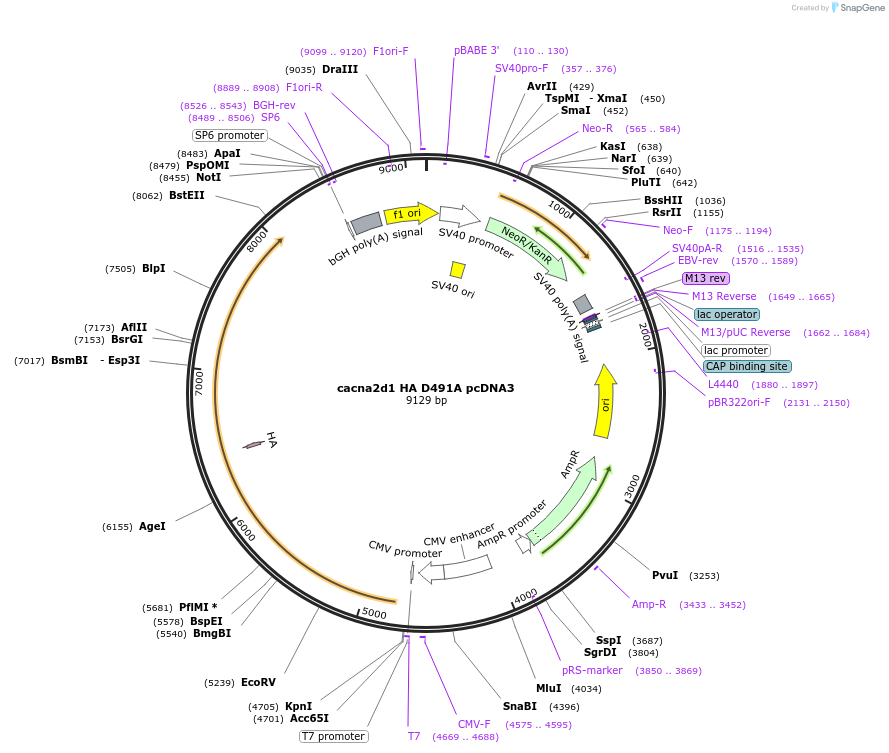cacna2d1 HA D491A pcDNA3
(Plasmid
#206070)
-
Purposeexpression of rat calcium channel alpha2delta-1 with a single HA tag inserted after aa549 and a D491A mutation that prevents Gabapentin binding
-
Depositing Lab
-
Sequence Information
Ordering
| Item | Catalog # | Description | Quantity | Price (USD) | |
|---|---|---|---|---|---|
| Plasmid | 206070 | Standard format: Plasmid sent in bacteria as agar stab | 1 | $89 | |
Backbone
-
Vector backbonepcDNA3
-
Backbone manufacturerInvitrogen Life Technologies
- Backbone size w/o insert (bp) 5446
-
Vector typeMammalian Expression
Growth in Bacteria
-
Bacterial Resistance(s)Ampicillin, 100 μg/mL
-
Growth Temperature37°C
-
Growth Strain(s)DH5alpha
-
Copy numberHigh Copy
Gene/Insert
-
Gene/Insert namecacna2d1
-
Alt namealpha2delta-1
-
SpeciesR. norvegicus (rat)
-
Insert Size (bp)3970
-
MutationD491A
-
Entrez GeneCacna2d1 (a.k.a. CCHLA2, Cacna2, DHSCCA)
- Promoter CMV
Cloning Information
- Cloning method Restriction Enzyme
- 5′ cloning site unknown (unknown if destroyed)
- 5′ sequencing primer CTGGCTAACTAGAGAACC
- 3′ sequencing primer GCATTTAGGTGACACTATAG
- (Common Sequencing Primers)
Resource Information
-
A portion of this plasmid was derived from a plasmid made byKevin Campbell
Terms and Licenses
-
Academic/Nonprofit Terms
-
Industry Terms
- Not Available to Industry
Trademarks:
- Zeocin® is an InvivoGen trademark.
These plasmids were created by your colleagues. Please acknowledge the Principal Investigator, cite the article in which the plasmids were described, and include Addgene in the Materials and Methods of your future publications.
-
For your Materials & Methods section:
cacna2d1 HA D491A pcDNA3 was a gift from Annette Dolphin (Addgene plasmid # 206070 ; http://n2t.net/addgene:206070 ; RRID:Addgene_206070) -
For your References section:
Amino acid sensor conserved from bacteria to humans. Gumerov VM, Andrianova EP, Matilla MA, Page KM, Monteagudo-Cascales E, Dolphin AC, Krell T, Zhulin IB. Proc Natl Acad Sci U S A. 2022 Mar 8;119(10):e2110415119. doi: 10.1073/pnas.2110415119. Epub 2022 Mar 1. 10.1073/pnas.2110415119 PubMed 35238638



